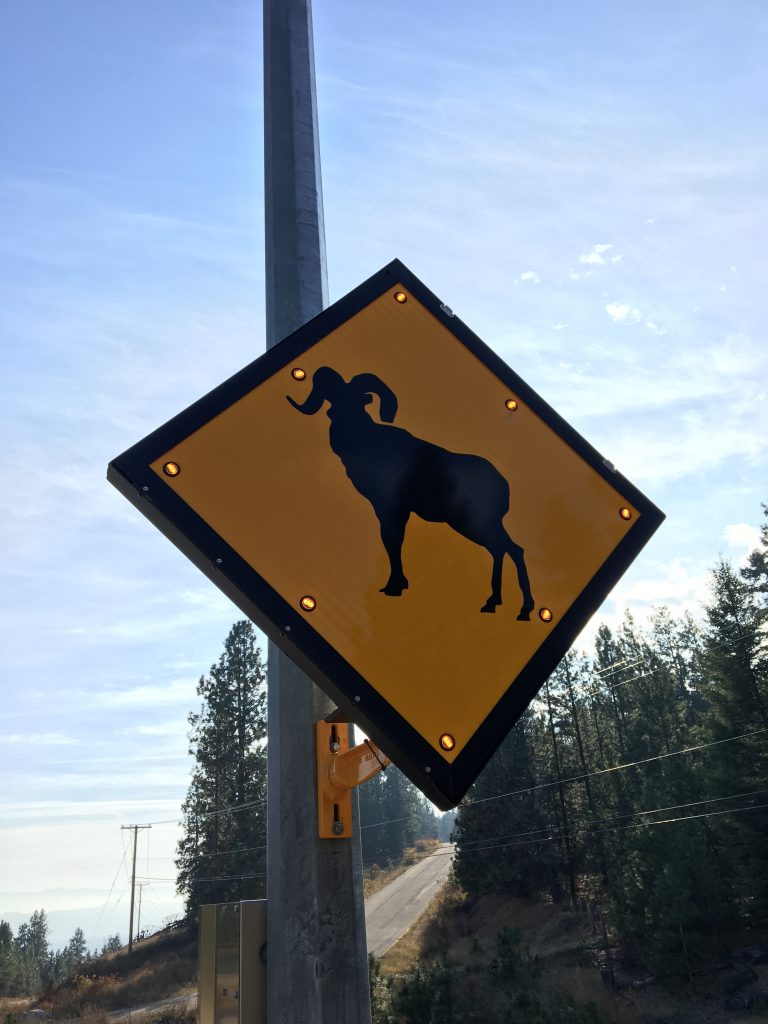While driving along Westside Road near Kelowna, one of our ministry staff got a bit of a wildlife surprise. Nine bighorn sheep were gathered at the edge of the road, overlooking the lake!
Have a look yourself:
Bighorn sheep have been documented in the area around the Westside Road since at least the early 2000’s.
To improve existing warning signage for motorists travelling this route, we installed six LED Bighorn sheep signs at three locations within the corridor.
Based on the recommendations of provincial wildlife biologists, the signs were grouped into 3 zones – which were determined to be ungulate “hot spots”.
The signs are always flashing (as the conditions and terrain weren’t suitable for the wildlife detection technology used in in areas in the province), and help to alert motorists to the potential for sheep and other wildlife on or near the road.

Did you know?
Keeping an eye out for wildlife on the highway while you’re driving can prevent hazards to you both. And to help you in your travels, we’ve compiled some handy tips on how you can treat all of B.C.’s wild creatures with care and improve your safety while driving on the highway:
- Be extra careful in the early morning, or at dusk and during the night. These times are when animals are most likely to be on the road.
- Look ahead into the ditch for movement, or for the reflection of animal eyes in your headlights.
- Some animals, especially deer, may panic when they see your headlights and may freeze on the road. If you see an animal, slow down until you are well past.
- Moose will often attempt to escape from a vehicle by continuing to run along the road. This may pose a hazard to other drivers. If it is safe to do so, pull over or slow to a very low speed until the animal leaves the road.
- Many animals travel in groups. If you see one on the road, slow down – there may be more following.
- Slow down! If you are travelling at a slower speed, you will more likely to react in time to prevent a wildlife collision.
- Don’t feed wildlife at any time. We need to keep wild animals wild and this is a great place we can start.
-
Pay attention. If you notice wildlife fencing or overpasses, use your road sense.
-
Above all, watch for the wildlife warning signs, which are posted at areas where animals are likely to be on the road.
Part of being a responsible driver is being mindful of wildlife on B.C. highways. Be sure to keep these tips in mind next time you head out to cruise the “open” road. If you’re interested in reading about what the Ministry of Transportation and Infrastructure is doing to protect drivers and wildlife, check out the links below:
It’s Amazing to See Wildlife Crossings Like Never Before
Join the discussion